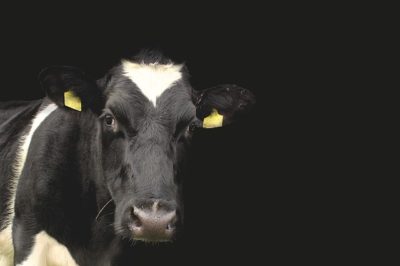Some of the biggest names in the dairy business killed more than a half million cows in an effort to keep milk prices high nationwide over the past decade.
A class-action lawsuit alleges that customers paid higher milk and dairy prices because farmers – both big and small — slaughtered more than 500,000 cattle under an agreement with the National Milk Producers Federation. The idea was to keep the supply of milk down.
In the end, the milk industry settled with the plaintiffs for $52 million.
The slaughter was organized by the National Milk Producers Federation (NMPF), a lobbying group which formed an organization called Cooperatives Working Together that consisted of four major dairy cooperatives: Dairy Farmers of America Inc., Land O’Lakes, Dairylea Cooperative Inc., and Agri-Mark Inc., Bloomberg reported.
The butchering was euphemistically called the “herd retirement program, and it consisted of a trip to the slaughterhouse where the cows were apparently ground up into cheap hamburger.
‘Miracle Oil Maker’ Lets You Make Fresh Nut Oils Within Minutes!
The cooperatives product about 70 percent of America’s milk and they paid the farmers above market prices for the cows.
The plan apparently worked, as milk prices rose by 66 cents per hundredweight between 2004 and 2008, an analysis by Scott Brown of the University of Missouri-Columbia showed, Reuters reported. A hundredweight is the standard wholesale measurement for milk equal to 100 pounds.
 The slaughter also violated a federal law called the Capper-Volstead Act, said Jeff Friedman, a partner at the law firm that filed the suit, Hagens Berman Sobol Shapiro LLP. That law allows farmers to form cooperatives but it bans price fixing.
The slaughter also violated a federal law called the Capper-Volstead Act, said Jeff Friedman, a partner at the law firm that filed the suit, Hagens Berman Sobol Shapiro LLP. That law allows farmers to form cooperatives but it bans price fixing.
But some farmers say the program was needed.
“No [dairy farmers] got rich on that program,” Gary Genske, an accountant and farmer in New Mexico with 2,000 cows, told Bloomberg. “It was those who were financially strapped and found that as a great exit strategy.”
This Cool-To-The-Touch Lantern Provides 100,000 Hours Of Emergency Backup Lighting
Farmers get paid less than a third the retail price of milk, said Genske, who is the treasurer of the National Dairy Producers Organization. Instead, most of the money goes to retailers, wholesalers and manufacturers of dairy products.
“These dairy farmers are up against a terrible reality,” Nate Wilson, a former dairy farmer from Chautauqua County, New York, told Bloomberg. “They don’t have any way to throttle the production of milk other than to eliminate cows. And when the price of milk goes down to ruinous levels, it’s basically the only way out.”
Friedman, the attorney for the plaintiffs, said not all farmers sold their cows out of necessity. The law, he said, does not allow the “farmers to get together to sell their milk to decide how much they were going to produce.”
If you lived in the states of Arizona, California, Kansas, Massachusetts, Michigan, Missouri, Nebraska, Nevada, New Hampshire, Oregon, South Dakota, Tennessee, Vermont, West Virginia and Wisconsin or the District of Columbia between 2003 and 2016, big dairy might owe you money. The $52 million will be distributed to residents and former residents of those states. To find out more and become eligible for the payment visit BoughtMilk.com.
What is your reaction? Share your thoughts in the section below:
 Off The Grid News Better Ideas For Off The Grid Living
Off The Grid News Better Ideas For Off The Grid Living




